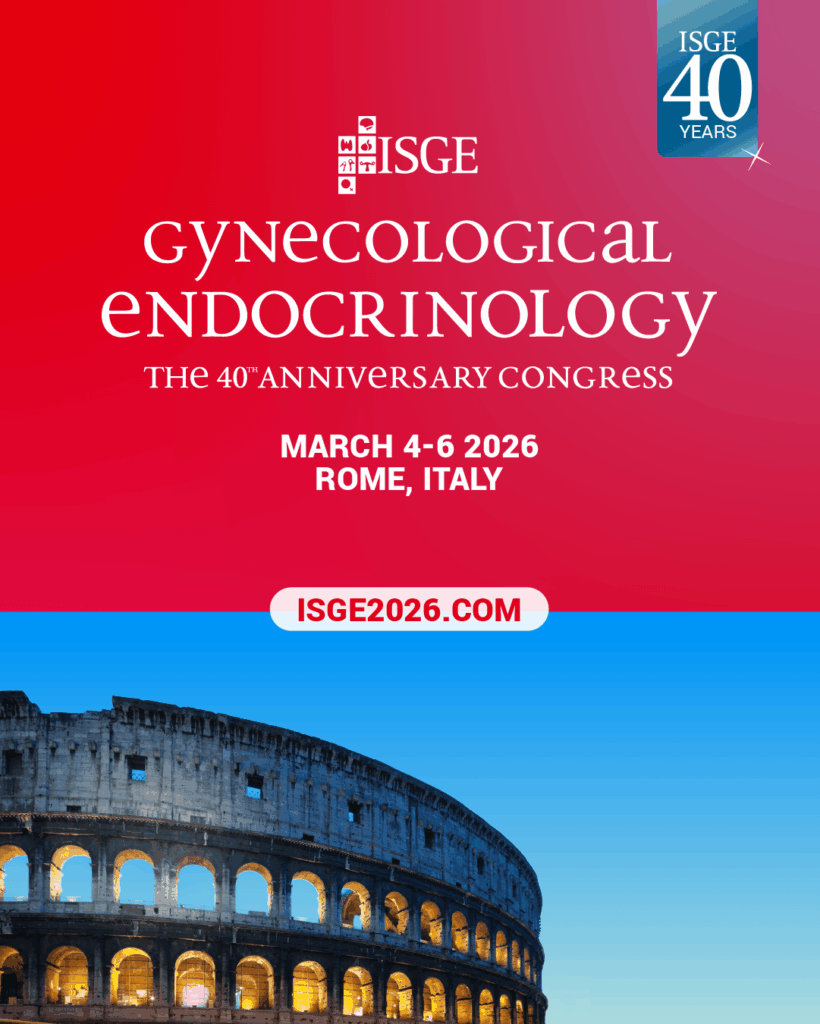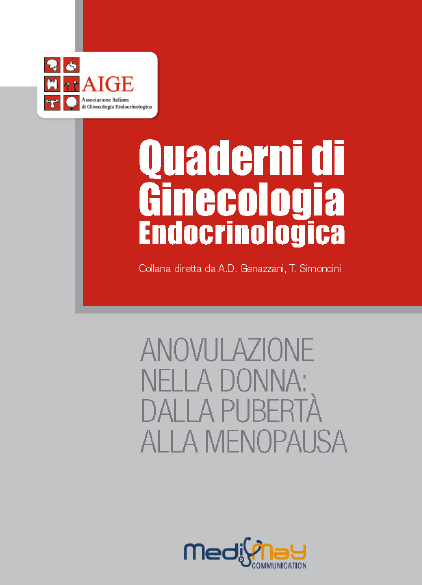-
Y H M Krul-Poel, C Snackey, Y Louwers, P Lips, C B Lambalk, J S E Laven, S Simsek
The role of vitamin D in metabolic disturbances in polycystic ovary syndrome: a systematic review
Eur J Endocrinol 169 (6) 853-865, 2013
Abstract
Context Metabolic disturbances, in particular, insulin resistance (IR) and dyslipidemia, are common in women suffering from polycystic ovary syndrome (PCOS). Evidence is accumulating that vitamin D status may contribute to the development of metabolic disturbances in PCOS.
Objective The aim of this study was to carry out a systematic review addressing the association between vitamin D status, vitamin D receptor polymorphisms, and/or polymorphisms related to vitamin D metabolism and metabolic disturbances in women with PCOS.
Design and methods A systematic search of electronic databases was carried out up to January 2013 for observational studies and clinical trials in women suffering from PCOS with outcome measures that were related to vitamin D status. We conducted univariate and multivariate regression analyses of the weighted means to gain insights into the association between vitamin D, BMI, and IR based on existing literature.
Results We found 29 eligible trials with inconsistency in their results. One well-designed randomized controlled trial has been carried out until now. Univariate regression analyses of the weighted means revealed vitamin D to be a significant and independent predictor of IR in both PCOS and control women. The significance disappeared after adjustment for BMI in PCOS women.
Conclusions Current evidence suggests an inverse association between vitamin D status and metabolic disturbances in PCOS. Owing to the heterogeneity of the studies, it is hard to draw a definite conclusion. The causal relationship between vitamin D status and metabolic disturbances in PCOS remains to be determined in well-designed placebo-controlled randomized clinical trials.
-
Nikos Vlahos, Athanasios Vlachos, Olga Triantafyllidou, Nikolaos Vitoratos, George Creatsas
Continuous versus cyclic use of oral contraceptives after surgery for symptomatic endometriosis: a prospective cohort study
Fertil Steril 2013;100:1337–42
Abstract
OBJECTIVE: To evaluate the efficacy of continuous oral contraceptive (OC) use versus the usual cyclic fashion in the recurrence of endometriosis-related symptoms after surgery. DESIGN: Prospective cohort trial involving patients in two tertiary care units.
SETTING: Academic institution in collaboration with a private hospital.
PATIENT(S): 356 patients underwent surgical treatment by laparoscopy for symptomatic endometriosis.
INTERVENTION(S): After surgical treatment for endometriosis, patients offered 6-month course of cyclic OC (including a 7-day pill-free period) or continuous OC.
MAIN OUTCOME MEASURE(S): Recurrence rate of endometriosis-related symptoms and endometriomas after fertility-sparing surgery.
RESULT(S): Out of 356 patients, 167 were placed on the usual cyclic OC course and 85 on continuous OC for a minimum of 6 months. The continuous OC group experienced a statistically significant reduction in recurrence rates for endometrioma, dysmenorrhea, and non-menstrual pelvic pain as compared with the cyclic OC group. There was no reduction in the recurrence of dyspareunia between the two groups.
CONCLUSION(S): After surgical treatment of endometriosis, the use of both cyclic and continuous OC improves pain symptoms when compared with preoperative scores. Continuous OC appears to be associated with a reduced recurrence rate for dysmenorrhea, non-menstrual pelvic pain, and endometrioma but not for dyspareunia as compared with cyclic OC.
-
Micah J. Hill, Brian W. Whitcomb, Terrence D. Lewis, Mae Wu, Nancy Terry, Alan H. DeCherney, Eric D. Levens, Anthony M. Propst
Progesterone luteal support after ovulation induction and intrauterine insemination: a systematic review and meta-analysis
Fertil Steril 2013;100:1373–80
Abstract
OBJECTIVE:To evaluate the effect of luteal phase P support after ovulation induction IUI.
DESIGN: A systematic review and meta-analysis.
SETTING: Not applicable.
PATIENT(S): Undergoing ovulation induction IUI.
INTERVENTION(S): Any form of exogenous P in ovulation induction IUI cycles.
MAIN OUTCOME MEASURE(S): Clinical pregnancy and live birth.
RESULT(S): Five trials were identified that met inclusion criteria and comprised 1,298 patients undergoing 1,938 cycles. Clinical pregnancy (odds ratio [OR] 1.47, 95% confidence interval [CI] 1.15-1.98) and live birth (OR 2.11, 95% CI 1.21-3.67) were more likely in P-supplemented patients. These findings persisted in analyses evaluating per IUI cycle, per patient, and first cycle only data. In subgroup analysis, patients receiving gonadotropins for ovulation induction had the most increase in clinical pregnancy with P support (OR 1.77, 95% CI 1.20-2.6). Conversely, patients receiving clomiphene citrate (CC) for ovulation induction showed no difference in clinical pregnancy with P support (OR 0.89, 95% CI 0.47-1.67).
CONCLUSION(S): Progesterone luteal phase support may be of benefit to patients undergoing ovulation induction with gonadotropins in IUI cycles. Progesterone support did not benefit patients undergoing ovulation induction with CC, suggesting a potential difference in endogenous luteal phase function depending on the method of ovulation induction.
-
Ana Julissa Serrano, Leire Begona, Eduardo Anitua, Raquel Cobos, Gorka Orive
Systematic review and meta-analysis of the efficacy and safety of alendronate and zoledronate for the treatment of postmenopausal osteoporosis
Gynecol Endocrinol, 2013; 29(12): 1005–1014
Abstract
The aim of this meta-analysis was to evaluate the efficacy and safety of two bisphosphonates (alendronate and zoledronate) in the treatment of postmenopausal osteoporosis. The incidence
of fractures was considered as primary endpoint. Only randomized trials with a follow-up period of 1 year or more were included in this systematic review and meta-analysis. We excluded studies that included patients with secondary osteoporosis especially in relation to therapy with corticosteroids or other drugs or diseases known to affect bone mineral density.
Studies published as subgroup analysis, extension studies, economic evaluations, and comparisons with active control were excluded. The methodological quality of controlled clinical trials that met these inclusion criteria was evaluated. No studies were excluded from analysis due to lack of quality. The risk ratio of hip, vertebral and wrist fractures for alendronate were 0.61 [95% confidence interval (CI) 0.40–0.93], 0.54 (95% CI 0.44–0.66) and 0.65 (95% CI 0.33–1.25), respectively. Zoledronate risk ratio was 0.62 (95% CI 0.46–0.82) and 0.38 (95% CI 0.22–0.67) for hip and vertebral fractures, respectively.
-
Costantino Di Carlo, Virginia Gargano, Stefania Sparice, Giovanni A. Tommaselli, Giuseppe Bifulco, Carmine Nappi
Effects of an oral contraceptive containing estradiol valerate and dienogest on circulating androgen levels and acne in young patients with PCOS: an observational preliminary study
Gynecol Endocrinol, 2013; 29(12): 1048–1050
Abstract
This study shows the effect of a 1 year treatment with an estradiol valerate/dienogest pill in 36 women suffering from polycystic ovaries and mild or moderate acne. At beginning of the study, 24 patients (66.7%) had grade 1–2 (mild) acne and 12 patients (33.3%) had grade 3 (moderate) acne. After 12 cycles of therapy, we found an improvement of acne in 19 (52.8%) patients and a worsening of acne in 3 (8.4%) patients. The percentage of patients recovered was statistically significant (p<0.01). SHBG levels were significantly higher after 6 and 12 months of therapy (p<0.001), while total testosterone levels were lower in all patients at 6 and 12 months although this trend did not reach statistical significance. In conclusion, the present study suggests that the E2V/DNG pill could exert a positive influence on acne and hyperandrogenism.
Since this is an observational study on a very limited population number, additional randomized controlled studies on larger populations are needed also to determine the effects of this contraceptive over longer periods of use
-
Sanaz Ghazal, Lubna Pal
Perspective on hormone therapy 10 years after the WHI
Maturitas 76 (2013) 208–212
Abstract
The Women’s Health Initiative (WHI) hormone trials are among the most influential and debated research studies in women’s health in recent medical history [1,2]. This year (2013) marked the 10th anniversary of the publication of the WHI results and this past decade has been nothing less than revolutionary. We have witnessed a transformative evolution in our understanding of, and in the practice of, menopause management and herein summarize the strides the field has traversed over the past 10 years
-
Gabriela J. Prutsky, Juan Pablo Domecq, Vishnu Sundaresh, Tarig Elraiyah, Mohammed Nabhan, Larry J. Prokop, Adrian Vella, Victor M. Montori, Mohammad Hassan Murad
Screening for Gestational Diabetes: A Systematic Review and Meta-Analysis
J Clin Endocrinol Metab 98: 4311– 4318, 2013
Abstract
Context: Gestational diabetes mellitus (GDM) is defined as any degree of hyperglycemia with first recognition during pregnancy. The optimal time to screen forGDMthat would maximize the yield and benefits remains unclear.
Objective: Our objective was to appraise the evidence regarding screening for GDM (accuracy, correlation with adverse outcomes, and harms).
Data Sources: We searched Ovid Medline, OVID EMBASE, OVID Cochrane Library, Web of Science, Scopus, PsycInfo, and CINAHL through May 2011.
Study Selection: Weincluded randomized controlled trials and observational studies that enrolled pregnant woman who were evaluated using different GDM screening tests.
Data extraction: Two reviewers working independently abstracted the data.
Results: We did not find any randomized controlled trials of GDM screening that measured fetomaternal outcomes. A 1-hour 50-g glucose challenge test with a cutoff point at 140 mg/dL was the most commonly used screening method. The results of this test were statistically associated with feto-maternal outcomes (P < .001), even though only 11% of individuals with a positive test (according to Carpenter and Coustan criteria) developed GDM. Positive Carpenter and Coustan criteria were associated with macrosomia (odds ratio [OR] = 2.4, 95% confidence interval [CI] = 1.9 –3.1, P<.001) and gestational hypertension (OR =1.7, CI= 1.3–2.1, P<.001). Positive National
Diabetes Data Group criteria were also associated with macrosomia (OR = 3.2, CI = 2.3– 4.4, P <.001) and gestational hypertension (OR= 2.1, CI = 1.6 –2.8, P < .001).
Conclusions: Indirect evidence supports the use of contemporary screening tests for GDM to identify pregnancies at increased risk of adverse feto-maternal outcomes. It also suggests that use of these tests will place somewomenunder unnecessary treatment forGDM
-
Andrea Dunaif, Bart C. J. M. Fauser
Renaming PCOS—A Two-State Solution
J Clin Endocrinol Metab 98: 4325– 4328, 2013
Abstract
Context: It has become evident over the past 30 years that polycystic ovary syndrome (PCOS) is more than a reproductive disorder. It has metabolic sequelae that can affect women across the lifespan. Diagnostic criteria based on the endocrine features of the syndrome, hyperandrogenism and chronic anovulation, such as the National Institutes of Health (NIH) criteria, identifywomenat high metabolic risk. The additional phenotypes defined by the Rotterdam diagnostic criteria identify women with primarily reproductive rather than metabolic dysfunction.
Objective: The aim is to discuss the rationale for a separatenamefor the syndrome that is associated with high metabolic risk while maintaining the current name for the phenotypes with primarily reproductive morbidity.
Intervention: The NIH Office for Disease Prevention-Sponsored Evidence-Based Methodology Workshop on Polycystic Ovary Syndrome recommended that a new name is needed for PCOS.
Positions: The authors propose that PCOS be retained for the reproductive phenotypes and that a new name be created for the phenotypes at high metabolic risk.
Conclusions: There should be two names for the PCOS phenotypes: those with primarily reproductive consequences should continue to be called PCOS, and those with important metabolic consequences should have a new name.






